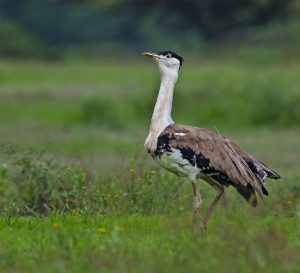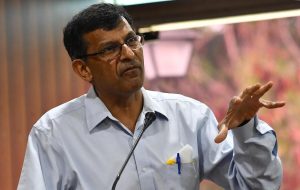Today’s Current Affairs: 10th March 2023 for UPSC IAS exams, State PSC exams, SSC CGL, State SSC, RRB, Railways, Banking Exam & IBPS, etc
Table of Contents
Jan Aushadhi Diwas 2023:

On the occasion of ‘5th Jan Aushadhi Diwas’, the Union Minister for Health and Family Welfare also inaugurated ‘NaMo Day Care Centre’ and flagged off four NaMo Mobile Healthcare Units.
- The Department of Pharmaceuticals is celebrating Jan Aushadhi Diwas from March 1 to March 7, 2023, to create awareness about the Jan Aushadhi Scheme.
- It is observed to generate awareness about the usage of generic medicines and the benefits of Jan Aushadhi Pariyojana and its salient features and achievements.
- Jan Aushadhi Mitra’ publicize the benefits of Jan Aushadhi Kendras for betterment of the people.
- Pradhan Mantri Bhartiya Janaushadhi Pariyojana (PMBJP) was launched by the Department of Pharmaceuticals, Ministry of Chemicals & Fertilizers, Government of India in November, 2008.
- As on 31st January, 2023, the numbers of stores have increased to 9082.
- Under the PMBJP,743 districts out of 764 districts of the country have been covered.
- This scheme ensures easy reach of affordable medicine to the people in every nook and corner of the country.
- The Government has set a target to increase the number of Pradhan Mantri Bhartiya Janaushadhi Kendras (PMBJKs) to 10,000 by the end of December,2023.
- Product basket of PMBJP comprises 1,759 drugs and 280 surgical instruments.
- Further, new medicines and nutraceuticals products like protein powder, malt-based food supplements, protein bar, immunity bar, sanitizer, masks, glucometer, oximeter, etc. have been also launched.
Money Laundering Provisions On Cryptocurrencies:

The government has recently imposed money laundering provisions on cryptocurrencies.
- The Finance Ministry said the anti-money laundering legislation has been applied to crypto trading, safekeeping and related financial services.
- The notification said,
- Exchange between virtual digital assets and fiat currencies,
- Exchange between one or more forms of virtual digital assets,
- Transfer of virtual digital assets, safekeeping or administration of virtual digital assets or instruments enabling control over virtual digital assets, and participation in and
- Provision of financial services related to an issuer’s offer and sale of a virtual digital asset”
- All of the above will now be covered by the Prevention of Money-laundering Act, 2002.
- Virtual digital assets were defined as any code or number or token generated through cryptographic means with the promise or representation of having inherent value.
- After this, Indian crypto exchanges will have to report suspicious activity to the Financial Intelligence Unit India (FIU-IND).
- The move is in line with the global trend of requiring digital-asset platforms to follow anti-money laundering standards similar to those followed by other regulated entities like banks or stock brokers.
- Digital currency and assets like NFTs (non-fungible tokens) have gained traction globally over the last couple of years.
- Trading in these assets has increased manifold with cryptocurrency exchanges being launched.
Cryptocurrency:
- It is a digital currency that can be used in place of conventional money.
- In cryptocurrencies, cryptography is used to secure and verify transactions.
- It is also used to control the supply of cryptocurrencies.
Megha-Tropiques-1 (MT-1) Satellite:

The Indian Space Research Organisation (ISRO) successfully carried out the controlled re-entry experiment for the decommissioned Megha-Tropiques-1 (MT-1) satellite.
- Due to the increasing number of objects in space (Space Debris), the international aerospace community has adopted guidelines and assessment procedures to reduce the number of non-operational spacecraft and spent rocket upper stages orbiting the Earth.
- One method of post mission disposal is to allow the reentry of these spacecraft, either from natural orbital decay (uncontrolled) or controlled entry.
- Orbital decay or uncontrolled is One way to accelerate orbital decay is to lower the perigee altitude so that atmospheric drag will cause the spacecraft to enter the Earth’s atmosphere more rapidly.
- Controlled entry normally is achieved by using more propellant with a larger propulsion system to cause the spacecraft to enter the atmosphere at a steeper flight path angle.
- The vehicle will then enter the atmosphere at a more precise latitude and longitude, and the debris footprint can be positioned over an uninhabited region, generally located in the ocean.
One Nation, One Challan Initiative:

One Nation, One Challan is a govt initiative to bring all related agencies, such as the traffic police and the Regional Transport Office (RTO), on one platform.
- The Gujarat government is in the process of setting up virtual traffic courts in the state under the One Nation, One Challan initiative.
- One Nation, One Challan is an initiative of the Ministry of Road Transport and Highways.
- It aims to bring all related agencies, such as the traffic police and the Regional Transport Office (RTO), on one platform, to enable the seamless collection of challans as well as data transfer.
- The system involves the detection of traffic violations through the CCTV network and getting the registration number of the erring vehicle from applications like VAHAN (detecting the vehicle’s ownership details) and SARATHI (compilation of driving licenses).
- An e-challan is then generated with the relevant penalty amount, and sent to the mobile number linked with the vehicle.
- If someone doesn’t pay the challan amount within 90 days, the challan will be automatically forwarded to a virtual court and proceedings will be initiated.
- Virtual traffic courts are aimed at eliminating the presence of litigants in the court.
- An accused can search their case on the virtual court’s website. Upon successful payment of the fine, the case will be shown as disposed of.
NISAR Satellite:

The US Air Force handed over NISAR, an earth observation satellite jointly developed by NASA and ISRO, to the Indian space agency.
- NISAR will be used by ISRO for a variety of purposes like volcanic eruptions, agricultural mapping, landslide-prone areas etc.
- The 2,800 kilograms satellite consists of both L-band and S-band synthetic aperture radar (SAR) instruments, which makes it a dual-frequency imaging radar satellite.
- While NASA has provided the L-band radar, GPS, a high-capacity solid-state recorder to store data, and a payload data subsystem, ISRO has provided the S-band radar, the GSLV launch system and spacecraft.
- Another important component of the satellite is its large 39-foot stationary antenna reflector.
- Made of a gold-plated wire mesh, the reflector will be used to focus “the radar signals emitted and received by the upward-facing feed on the instrument structure”
National Assessment And Accreditation Council : Facing Allegations

The National Assessment and Accreditation Council (NAAC) has been facing allegations of irregularities in its functioning.
- There have been calls for the NAAC to adopt an Outcome-based approach (rather than a self-assessment input-based approach): In an outcome-based, the emphasis would be given to finding out if students are equipped with relevant skills and academic abilities.
- The former chairperson of NAAC’s executive committee resigned after alleging that malpractices were leading to questionable grades being awarded to some institutions.
- An inquiry commissioned found irregularities in the IT system and allocation of assessors.
- The inquiry also highlighted that nearly 70% of experts from the pool of around 4,000 assessors have not received any opportunity to make site visits.
- As of January 2023, out of the 1,113 universities and 43,796 colleges in the All India Survey on Higher Education (AISHE), 2020-2021, only 418 universities and 9,062 colleges were NAAC-accredited.
NAAC:
- Established in 1994, it is an autonomous body under the University Grants Commission (UGC) responsible for assessing the quality of higher educational institutions in India.
- Through a multi-layered assessment process, it awards grades ranging from A++ to C based on parameters such as curriculum, faculty, infrastructure, research and financial well-being.
H3N2 Outbreak:

Across India, an outbreak of a respiratory illness with symptoms of cold, sore throat and fever accompanied by fatigue has been observed since December 2022 and January 2023.
- The Indian Council of Medical Research (ICMR) confirmed that Influenza Sub-type H3N2 has been causing this illness.
- It further warned that the virus appeared to lead to more hospitalisations than other Influenza subtypes.
- There are four types of seasonal influenza viruses, types A, B, C and D.
- Influenza A and B viruses circulate and cause seasonal epidemics of disease. Influenza A viruses are the only influenza viruses known to cause flu pandemics (i.e., global epidemics of flu disease).
- H3N2 virus is a type of influenza virus called the influenza A virus.
- It is a respiratory viral infection that causes illnesses every year. This subtype of influenza A virus was discovered in 1968 in humans.
- The virus derives from types of protein strains of the influenza A virus – hemagglutinin (HA) and neuraminidase (NA).
- HA has over 18 different subtypes, each numbered H1 to H18 while NA has 11 different subtypes, each numbered N1 to N11.
- The H3N2 is a combination of the two protein strains of the influenza A virus.
- The symptoms of the H3N2 virus include cough, runny nose or congested nose, sore throat, headaches, body aches, fever, chills, fatigue, diarrhoea, vomiting and breathlessness.
Transit Anticipatory Bail To a Person In An FIR Lodged Against Him By The Tamil Nadu Police

The Delhi High Court recently granted transit anticipatory bail to a person in an First Information Report (FIR) lodged against him by the Tamil Nadu police.
- Transit Anticipatory Bail is sought when a case against a person has been or is likely to be filed in a state different from the one in which the person is likely to be arrested.
- The purpose of transit bail is to allow the person bail, so they can approach the appropriate court in the state in which the case has been filed for anticipatory bail.
- In the absence of transit anticipatory bail, the result would be that another state’s police could arrest a person from their home state without them having the opportunity to apply for anticipatory bail at all.
- The procedure to be followed in transit anticipatory bail is exactly the same as of any other anticipatory bail application.
- The concept of transit anticipatory bail is not codified in Indian law but has found its identity through judicial practice and legal precedents.
- Anticipatory Bail is the bail granted to a person in anticipation and apprehending arrest.
- Under Section 438 of CrPC, any individual who discerns that he may be tried for a non-bailable offense can apply for anticipatory bail.
- The application shall be made to the High Court or Sessions Court, where the crime is alleged to be committed.
Great Indian Bustard (GIB) Area : CEA Regulations

The Central Electricity Authority (CEA) has issued Draft Central Electricity Authority (Construction of Electric Lines in Great Indian Bustard Area) Regulations, 2023, making mandatory for electric lines to be underground or overhead through the ‘Great Indian Bustard (GIB) Area’.
- The regulations came in light of a case in the Supreme Court (SC) on the issue of threat to the endangered Great Indian Bustards.
- As per the regulations, all electric lines of 33 kV and below passing through the ‘Great Indian Bustard Area’ will be underground, while those above 33KV will be overhead lines installed with bird flight diverters.
- These diverters are aimed at improving power line visibility for birds and reducing the risk of collision.
The Great Indian Bustard :
- The State bird of Rajasthan, is considered India’s most critically endangered bird.
- It is considered the flagship grassland species, representing the health of the grassland ecology.
- Its population is confined mostly to Rajasthan and Gujarat. Small populations occur in Maharashtra, Karnataka and Andhra Pradesh.
- Protection Status:
- IUCN red List: Critically Endangered
- Convention on International Trade in Endangered Species of Wild Fauna and Flora (CITES): Appendix1
- Convention on Migratory Species (CMS): Appendix I
- Wildlife (Protection) Act, 1972: Schedule I
What Is Hindu Rate Of Growth?

Former Reserve Bank of India (RBI) governor Raghuram Rajan recently said India was “dangerously close” to the ‘Hindu rate of growth’.
- Hindu Rate of Growth is a term describing low Indian economic growth rates from the 1950s to the 1980s, which averaged around 4%.
- The term was coined by the late economist Raj Krishna in 1978 to describe the slow growth in the country.
- A former lecturer at the Delhi School of Economics (DSE), Krishna noted that only if the rate of growth is persistently slow and accompanied by low per-capita GDP, then it will be known as Hindu rate of growth but it has to factor in population growth as well.
- GDP is the final value of the goods and services produced within the geographic boundaries of a country during a specified period of time, normally a year.
- The GDP growth rate is an important indicator of the economic performance of a country.
- It can be measured by three methods, namely, Output Method, Expenditure Method, and Income Method
Medium Range Surface-to-Air Missile : Successful Test-Firing

The Indian Navy has carried out a successful test-firing of a Medium Range Surface-to-Air Missile (MRSAM) and a ship-launched version of BrahMos missile.
- Medium Range Surface-to-Air Missile also called the ‘Abhra’ Weapon Systemis a state-of-the-art medium-range air defence weapon system.
- It is a joint venture of DRDO and Israeli Aerospace Industries (IAI) and is produced at Bharat Dynamics Limited (BDL).
- It is designed to destroy hostile aircraft, helicopters cruise missiles and drones at a 70km range.
- BrahMos missile is a joint venture of India and Russia which makes supersonic cruise missiles
- It has a speed of 2.8 Mach or about three times the speed of sound.
- The missiles can be launched from a range of platforms such as submarines, ships, aircraft, or land.
- BrahMos Aerospace is also developing the BrahMos NG, a compact version of the missile.
Yaoshang Festival : Manipur

The five-day-long Yaoshang festival is Manipur’s version of Holi.
- Yaoshang Festival is celebrated every year on the full moon of Lamta month (February-March) of the Meitei lunar calendar.
- The festival is celebrated by the Meitei people who are predominantly Hindu.
- Meiteis are the dominant population of Manipur in northeastern India.
- It is celebrated at the same time as Holi and is known as ‘Manipur’s version of Holi’.
- The five-day-long celebration begins with the burning of ‘yaoshang’ (a small thatch hut/straw hut) which is constructed with bamboo and straws on the first day
- The highlight of the festival is the ThabalChongba, a traditional Manipuri folk dance where boys and girls hold hands and sing and dance in a circle.
- The festival marks the rejuvenation of the spirit of life and commemorates the birthday of Chaitanya Mahaprabhu.
Incredible India Campaign : Participating In ITB Berlin 2023

The Ministry of Tourism, Government of India under its “Incredible India” brand line is participating in ITB, Berlin 2023, showcasing India’s rich & diversified tourism potential.
- The ITB is a prestigious platform and is among the top international travel shows, where travel professionals come together to connect and showcase destinations and tourism products.
- In view of promoting Incredible India holistically, the Ministry of Tourism has developed five thematic television commercials on different themes which are Adventure Tourism, Heritage Tourism, MICE Tourism, Art & Craft and Wellness Tourism.
- Encouraging inbound travel and particularly in the backdrop of India’s G20 Presidency as well as grand celebrations of India@75 ‘AzadikaAmritMahotsav’, the Ministry of Tourism has declared “Incredible India! Visit India Year 2023”.
Incredible India Campaign:
- Incredible India is the name of an international tourism campaign maintained by the Government of India since 2002, to promote tourism in India.
- Incredible India 2.0 Campaign aims to shift from generic promotions to promotional plans specific to the market and content creation with thematic creatives depending on different niche products such as spiritual, medical, and wellness tourism.
- The Incredible India 2.0 campaign focuses on promoting niche tourism products, including yoga, wellness, luxury, and cuisine wildlife.
- Nodal Ministry: Ministry of Tourism.




